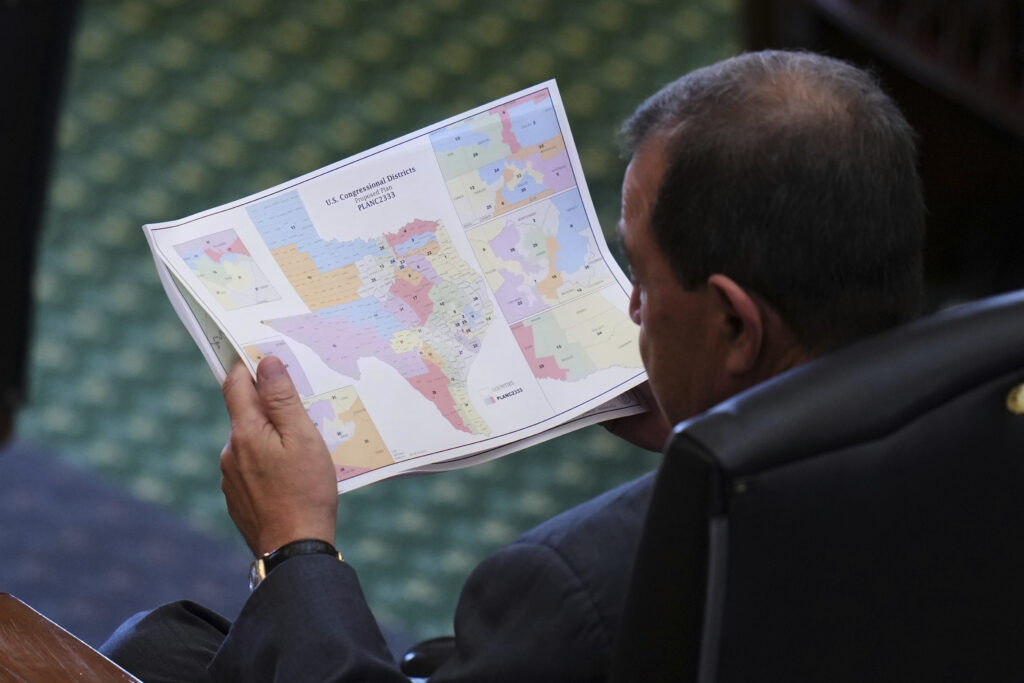‘We Could Not Have Clearer Facts’: Minority Advocates Say Racial Motive Is Evident As Texas Redistricting Hearing Wraps Up

EL PASO, TEXAS — A panel of three federal judges will soon decide whether to block Texas from using its new congressional map in the 2026 election, after a contentious nine-day hearing concluded Friday.
The key question at issue: whether Republicans intentionally diluted minority voting strength when they drew the new map over the summer.
Minority voters* and voting advocates challenging the map argued the new plan is a racial gerrymander that discriminates against Black and Latino voters. But lawyers for Texas made the case the map was drawn to take away congressional seats from Democrats – not minority voters.
Federal courts since 2019 have deemed partisan gerrymandering legal, while racial discrimination in redistricting is against the law.
As both sides made their closing arguments Friday, Nina Perales, an attorney with the Mexican American Legal Defense and Educational Fund (MALDEF), said the case was a straightforward one: Republicans intended to dilute minority voting strength.
“We could not have clearer facts than we have today,” Perales said.
Perales and other attorneys challenging the map focused their argument on a July 7 letter sent from the U.S. Department of Justice (DOJ) to Texas leaders urging the state to redistrict because of concerns about race-based districts in the existing map. The letter specifically identified which districts should be redrawn – largely the same majority-minority districts that ultimately were targeted by the legislature.
Gov. Greg Abbott (R) added redistricting to the legislative session agenda two days later, citing the “constitutional concerns” raised by the DOJ.
Later, asked in a TV interview why he called for the redraw, Abbott offered the argument outlined in the DOJ letter.
Texas attorneys, however, have argued throughout the hearing that Republicans actually drew the map only in order to gain five more seats in Congress. The DOJ letter was just meant to give political cover, they said.
The gerrymander was drawn by Adam Kincaid – the leading GOP mapmaker and director of the National Republican Redistricting Trust – who testified that he reviewed the DOJ letter one week before it was sent. Texas didn’t need the letter as political cover – it could simply redraw the map without an excuse, he said.
“My view of the DOJ letter was that it was unnecessary,” Kincaid testified on Tuesday, adding he spoke with Abbott about the letter before it was released.
Kincaid didn’t offer details of their conversation, however, or clarify whether he thought the letter actually was Abbott’s reason for calling for redistricting. An attorney representing Abbott’s office objected to the questions when they were put to Kincaid, claiming the information was privileged.
The judges didn’t say when they expect to issue a ruling, but time is running short. In Texas, candidates running in the 2026 primary election are scheduled to begin filing for a place on the ballot Nov. 8. Judges could move quickly to allow time for the case to be appealed to the U.S. Supreme Court.
It’s certainly not the first time a Texas election calendar has come up against redistricting litigation. The state’s primary election was delayed in 2012, moving from early March to late May.
Some Texas voters are represented by the Elias Law Group (ELG). ELG firm chair Marc Elias is the founder of Democracy Docket.